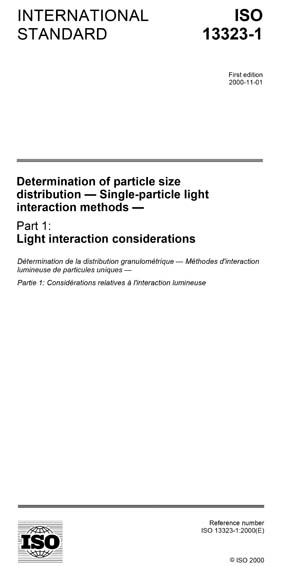Historical
ISO 13323-1:2000
Determination of particle size distribution -- Single-particle light interaction methods -- Part 1: Light interaction considerations
This part of ISO 13323 provides guidance on the selection and operation of devices that determine the size and number of particles by measuring the phenomena resulting from light interaction with individual particles present in a gas or liquid. The reported particle size is defined as an equivalent optical size based upon the response of the measurement system to calibration particles. This definition requires that the instrument be calibrated with well-defined materials.
This part of ISO 13323 applies to particles ranging in size from approximately 0,05 μm in diameter to the millimetre size range. Gas-borne particles in sizes from approximately 0,05 μm to 20 μm or so are measured primarily by light-scattering. Larger particles can be measured using light extinction sensors. Liquid-borne particles in the size range from approximately 0,05 μm to a few micrometres are measured by light-scattering. Light extinction is used to measure liquid-borne particles in sizes from approximately 1 μm to the millimetre size range. The size range capability of any single instrument is usually approximately 100:1. Particles larger than approximately 100 times the size of the smallest particle that can be measured with good sizing resolution are reported as “greater than or equal to the threshold size” of the largest size channel of the instrument.
The response that is considered in this part of ISO 13323 is the change in collected light flux resulting from the presence of a single-particle within the optical sensing zone of the measuring instrument. For this reason, instruments, which rely upon optical interaction to produce data only indicating the extent of particle motion, are not discussed here.
Content Provider
International Organization for Standardization [iso]






